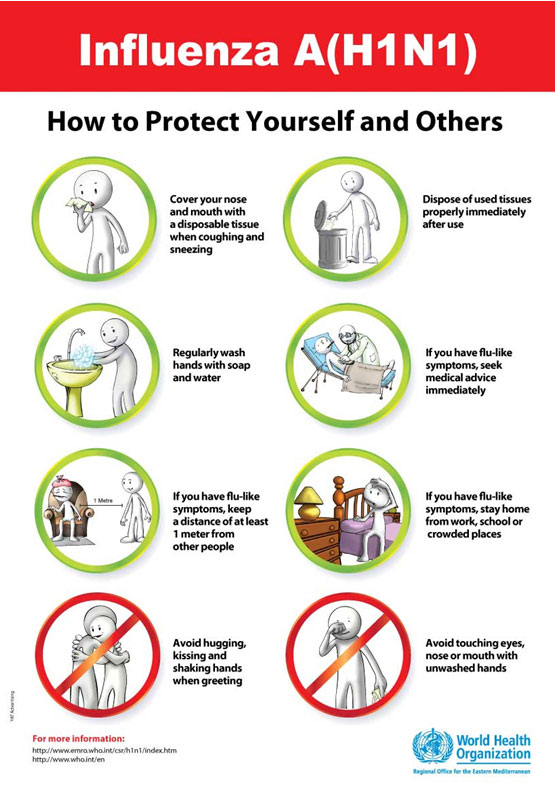
Canadian doctors report viremia in 2009 H1N1 patientsMontreal researchers have reported what may be the first documented instances of pandemic 2009 H1N1 influenza virus in the bloodstream. Writing in Diagnostic Microbiology and Infectious Disease, they describe a 45-year-old man and a 41-year-old woman who both reported to a hospital emergency department in may 2009. both had a fever, rapid pulse, and gastrointestinal symptoms, and both required intubation in the intensive care unit after their conditions deteriorated. Pandemic 2009 H1N1 was confirmed in both patients, and lab tests detected viremia in both. Real-time polymerase chain reaction confirmed 2009 H1N1 viremia in the man but was specific only for influenza a in the woman. He was eventually discharged after 55 days in the hospital, she after 42 days. the authors say that viremia in patients who have 2009 H1N1 flu may serve as a useful marker for severe disease, but further studies need to confirm this. They conclude, "Antiviral agents with low serum levels may be ineffective if administered to patients with influenza viremia."Mar 11 Diagn Microbiol Infect Dis study
CDC awards $10 million for infection control researchThe Centers for Disease Control and Prevention (CDC) today announced the awarding of $10 million in grants to five academic medical centers for research on ways to prevent healthcare-associated infections (HAIs). the awards are part of the CDC’s Prevention Epicenter grant program, which was launched in 1997. the prevention strategies to be studied include the use of combinations of bleach and ultraviolet light to clean hospital rooms; new tests to help determine which patients need antibiotics, with the aim of preventing resistant infections; methods to help doctors anticipate when medical devices are on the verge of causing an infection; and treating patients with harmless microorganisms that can help crowd out harmful ones. Institutions that will receive the funds are Cook County Health and Hospital system in collaboration with Rush University Medical Center, both in Chicago; Duke University in Durham, N.C.; Harvard Pilgrim Health Care, Wellesley, Mass.; the University of Pennsylvania in Philadelphia; and Washington University, St. Louis.Mar 14 CDC press release
Colorado firm gets NIAID grant for flu screening testInDevR, a company in Boulder, Colo., said it has been awarded a $3 million grant for further development of an influenza diagnostic test it has been working on. the grant is from the National Institute of Allergy and Infectious Diseases. the award follows completion of a successful, 2-year, $600,000 project to refine a low-density microarray assay for flu viruses, the firm said. the next phase will focus on combining the FluChip microarray with a colorimetric detection method and "integrating the entire assay into a cost-effective, cartridge-based instrument platform targeted for eventual clinical diagnosis," the company reported. the "foundational intellectual property" on which the tests are based is licensed from the University of Colorado, Boulder.Mar 11 InDevR press release
WHO says flu declining or low in most regionsThe World Health Organization’s (WHO’s) latest influenza surveillance update, covering the last week of February, says flu was still circulating but declining in most parts of North America and Europe and that activity was low in most of the rest of the world. in the United States, influenza-like illness levels remained above baseline but were decreasing, while Canada saw increases in Quebec and British Columbia but decreases in most other parts of the country. Flu activity declined in most European countries, especially in the west. On the basis of available reports, activity was low in North Africa, the Middle East, and all tropical regions, the WHO said. the vast majority of antigenically characterized viruses remained similar to those used in this year’s vaccine.Mar 11 WHO flu update
ResistanceMap tracks US trends in antibiotic resistanceThe Robert Wood Johnson Foundation (RWJF) has created an online tool called ResistanceMap to track trends in antibiotic-resistant pathogens like methicillin-resistant Staphylococcus aureus and carbapenem-resistant Acinetobacter baumannii in the United States. ResistanceMap will be updated monthly and will soon include interactive features, data on resistance rates in other countries, and new rates of US antibiotic use, according to an RWJF press release. the maps show some striking trends, including spikes in resistance to common antibiotics such as methicillin and ciprofloxacin from 2000 to 2009 among common microbes like S aureus and Escherichia coli.Mar 3 RWJF press releaseResistanceMap home page